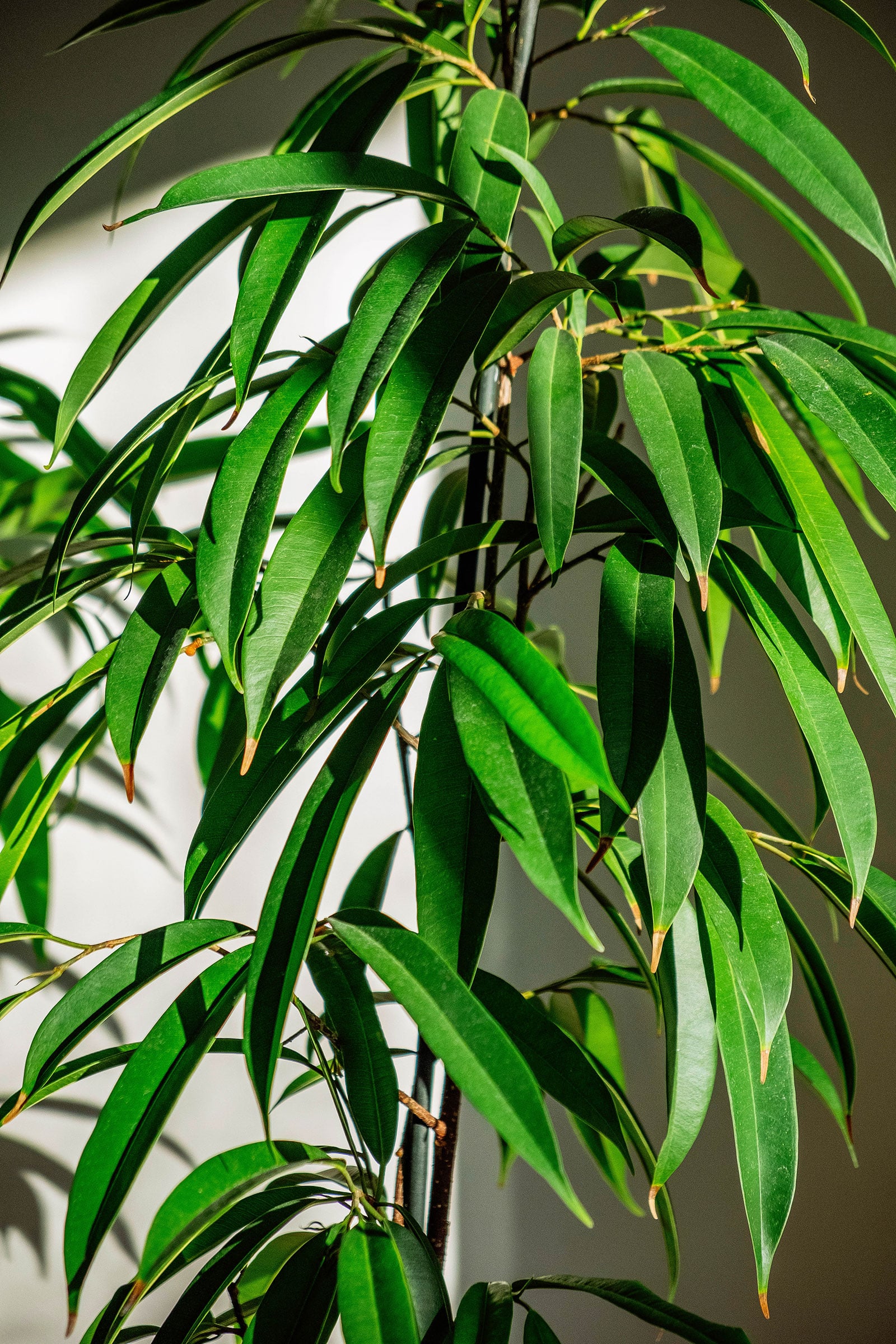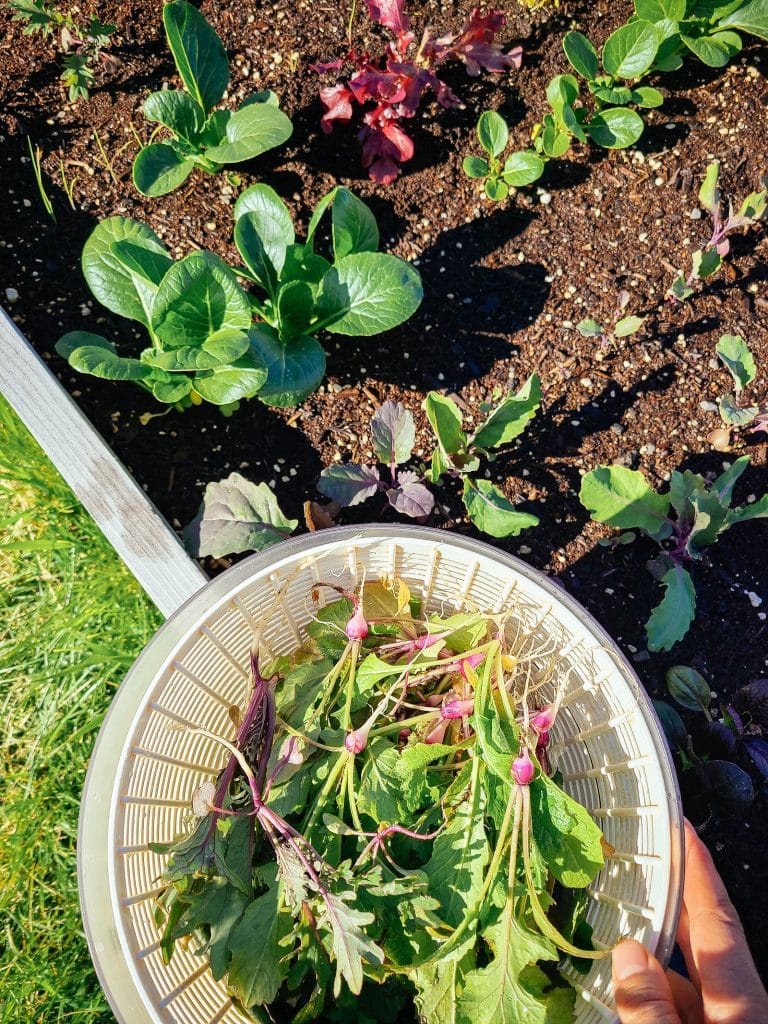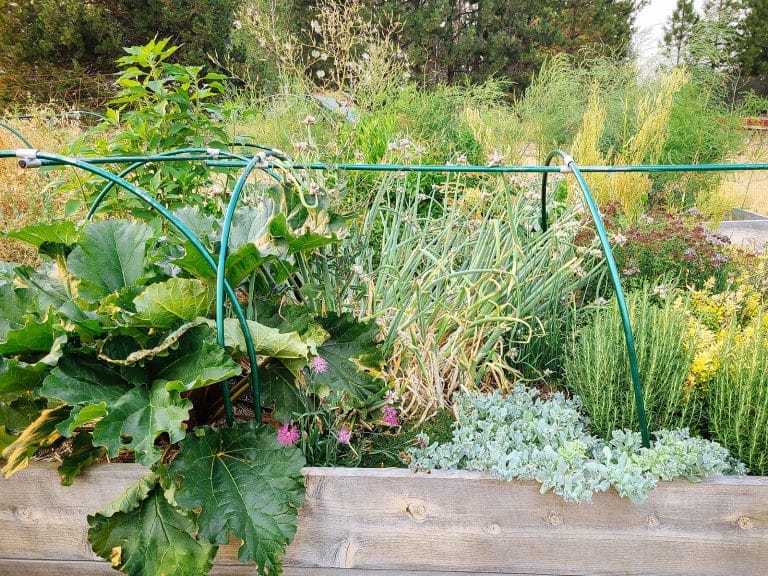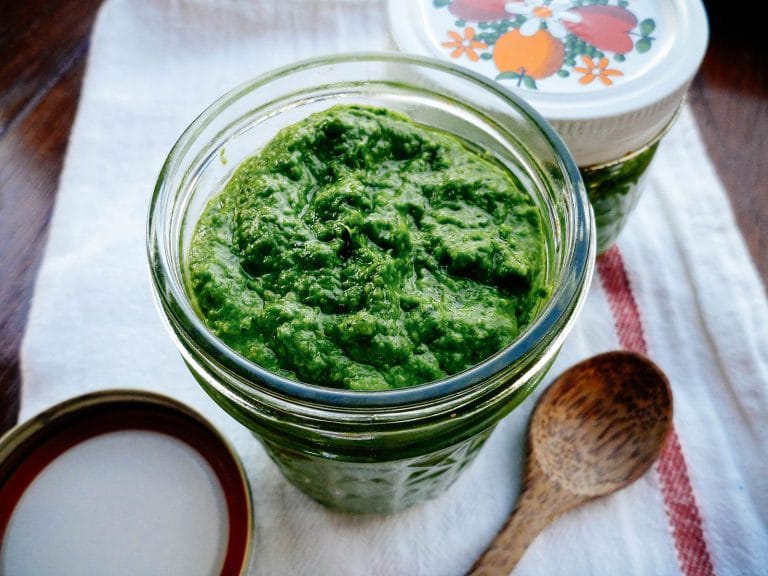Looking for a tropical-feeling indoor tree to brighten up your home? The genus Ficus (the figs) is a popular choice, but many species can be a little difficult to keep alive indoors. Luckily there’s an exception: Ficus ‘Alii’.
This long-leaved plant is known for being a lot more forgiving than most of its cousins (like the very popular fiddle leaf fig), making it the ideal choice if you don’t have a green thumb (yet).
Below, find out everything you need to know about Ficus ‘Alii’ and how to care for this popular houseplant.
Disclosure: If you shop from my article or make a purchase through one of my links, I may receive commissions on some of the products I recommend.
| Common name(s) | Ficus Alii, banana leaf fig, narrow leaf fig, long leaf fig |
| Scientific name | Ficus maclellandii ‘Alii’, sometimes incorrectly Ficus binnendijkii ‘Alii’ |
| Family | Moraceae |
| Height and spread | Up to 10 feet high and 3 feet wide |
| Light | Bright indirect |
| Soil type | Rich but well-draining |
| Water | Keep lightly moist |
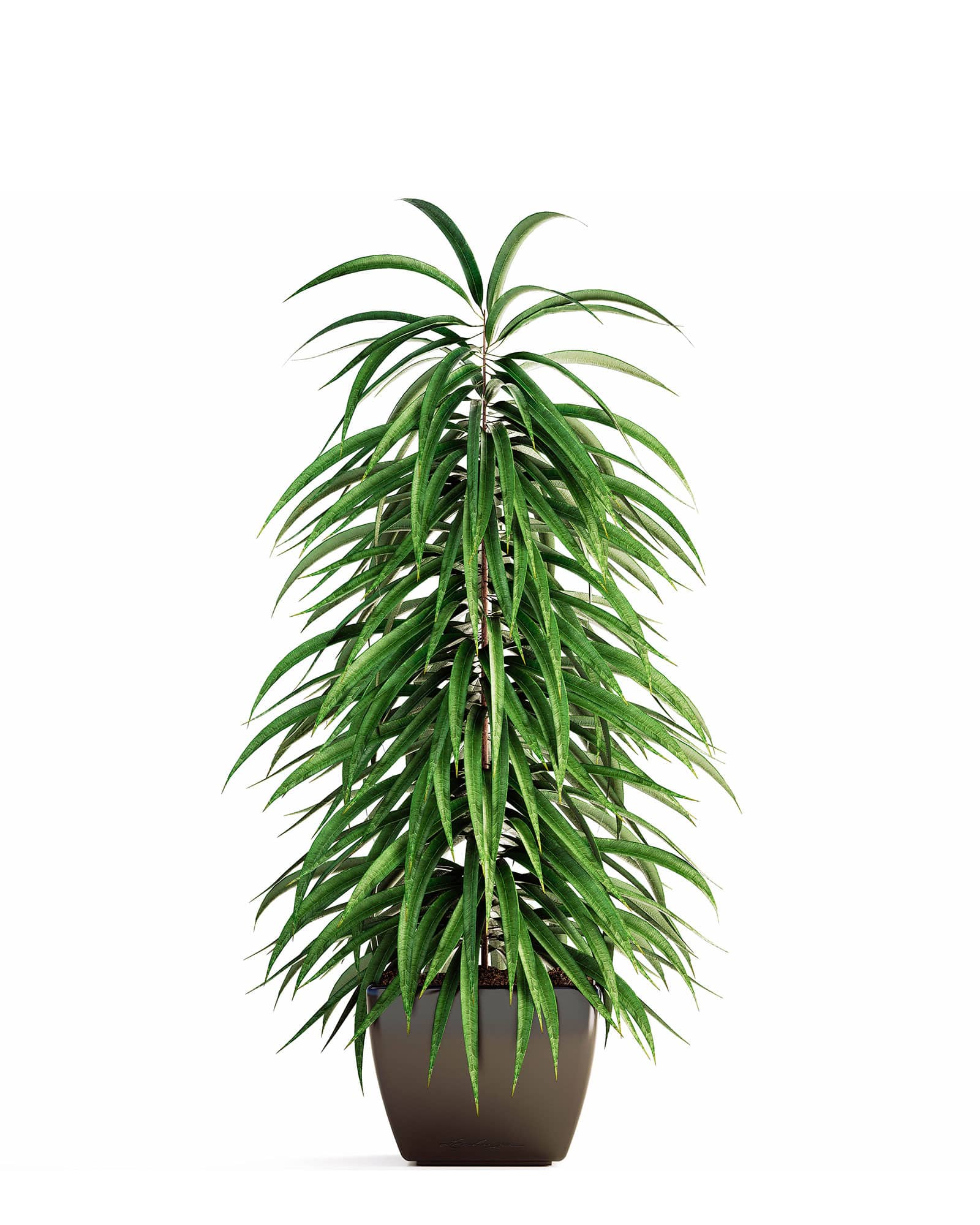
About Ficus ‘Alii’
Description
The houseplant we know as Ficus ‘Alii’ is a cultivar of a wild fig plant known scientifically as Ficus maclellandii. In their natural habitat, these trees can reach impressive heights and grow thick trunks. The ‘Alii’ variety, however, was cultivated specifically for indoor growing.
This houseplant is quite a looker. You can tell it apart from other species of Ficus by its more elongated leaves (up to 10 inches long on mature plants!), which hang down elegantly from the stems.
You’ll find Ficus ‘Alii’ for sale in two different shapes. One is a kind of cylindrical, bushy plant consisting of multiple stems bearing leaves from top to bottom. The other one is more “tree-shaped,” with one stem (or multiple braided together) and a tuft of leaves on top.
Did you know?
When searching for a Ficus ‘Alii’, you may come across a plant that looks very similar but bears a different name: Ficus ‘Amstel King’. This cultivar, which features larger leaves, was developed by a Dutch nursery using F. ‘Alii’ and was patented in 1993. Their care requirements are identical!
If you prefer a variegated plant, you can consider a third variety called ‘Amstel Gold’.
Where to buy
Ficus ‘Alii’ plants
Natural habitat
Wild Ficus maclellandii figs can be found in tropical areas in Southeast Asia and China, where they form part of the rainforest vegetation.
It’s not entirely clear how, who, and when, but it appears this plant was first cultivated on a commercial scale in the 1980s. This happened in Hawaii, an ideal place for houseplant cultivation thanks to its tropical climate. Here, growers added the name ‘Alii’, which refers to the traditional nobility of the Hawaiian islands.
Quick Tip
(House)plant naming can be chaotic, and this is no exception. Today’s subject is often found for sale as Ficus binnendijkii ‘Alii’, which is interesting given that there aren’t actually any plant species in the genus Ficus called “binnendijkii”! The correct full name is Ficus maclellandii ‘Alii’.
Caring for Ficus ‘Alii’
Light and temperature
This handsome Ficus isn’t demanding when it comes to light. I’ve kept mine in relatively dark corners for years and they’ve always done well enough. For the best growth, place your Ficus ‘Alii’ next to a window that doesn’t receive direct sun (like a north-facing one).
See more: Houseplants that don’t need a lot of light to thrive
Like many houseplants, your Ficus can be moved outdoors in summer. They love the extra light and grow like weeds outside, though it is important to place your plant in the shade to prevent leaf burn. Also, keep in mind that it will likely need more water than indoors.
As for temperature, I’ve mentioned that the wild version of this houseplant is naturally found in tropical regions in Asia. Unsurprisingly, it doesn’t like the cold. It’ll stop growing when temps drop below 50°F and can start dropping leaves if things get even chillier than that. Frost will kill it outright.
As with most tropical plants, room temperature is actually perfect for your Ficus ‘Alii’. If you feel comfortable in your home, then you can safely assume your plant does as well.
Water and humidity
One of the things that has made this indoor tree so popular is that it’s not quite as fussy as some of its cousins in the same genus. Take the common Ficus benjamina: It looks great, but it’s a drama queen that will drop its leaves if you wait just a little too long to water it (or if you dare to move it, for example).
Though you should still keep an eye on your plant, Ficus ‘Alii’ is a lot more forgiving. The best way to figure out whether your plant is thirsty is to just stick a finger in the soil. If it feels dry, you can give your plant a drink. If it still feels damp, it’s best to check again tomorrow.
In practice, you’ll usually end up watering about twice a week during summer. You can reduce this to once a week during winter, as your plant will be growing more slowly in the cooler months. The exact watering frequency depends on factors like light and temperature.
Soil and planting
You don’t need a complicated or expensive soil mixture for a Ficus ‘Alii’. A normal, high-quality houseplant soil works absolutely fine, although I do recommend also mixing in a handful of perlite or fine orchid bark for added drainage.
If you feel like the soil tends to dry too quickly, you can consider adding some peat moss or coco coir to the mixture. And if you’ve got some compost or worm castings on hand, that’ll definitely help, though it’s by no means a must.
There’s no need for a special planter either, although you should always use a pot with a drainage hole in the bottom. In a closed container, excess water will have nowhere to go, which can cause the roots of your Ficus to rot. A saucer helps prevent leaking water from staining your windowsill.
This plant doesn’t mind being a little cramped, so you’ll usually only have to repot it every two to three years. If you notice the potting soil beginning to dry very quickly or if the roots are starting to poke out of the planter’s drainage hole, that’s a sign you should go up a pot size next spring. Don’t forget to also give your plant some fresh soil.
Recommended products for Ficus ‘Alii’ plant care:
- Good Earth Organics Premium Potting Soil
- Perfect Plants Organic Perlite
- Better-Gro Orchid Bark
- Burpee Organic Coconut Coir
- Wiggle Worm Pure Organic Worm Castings
Fertilizing
This Ficus isn’t known for being a particularly quick grower, but it’ll still appreciate some extra nutrients during the spring and summer growing season. Consider applying a liquid houseplant fertilizer once or twice a month during watering.
There’s no need to use fertilizer during winter, as it can actually damage your plant when it’s not actively growing.
Recommended fertilizers for Ficus ‘Alii’:
- Elm Dirt Plant Juice Organic Fertilizer
- Houseplant Resource Center Liquid Fertilizer for Houseplants
- Bless Your Soil Fiddle Leaf Treats Indoor Plant Food
Pruning
You won’t have to do much in the way of pruning a Ficus ‘Alii’. Recently acquired plants can drop some of their leaves in response to the shock of being moved. You may remove any brown or crispy ones that haven’t fallen off by themselves.
If your Ficus does end up growing a bit unruly, you can take stem cuttings rather than just pruning it and throwing away the excess. This way, you get more plants to keep or sell.
Dividing or repotting
Like most other types of indoor trees, Ficus ‘Alii’ isn’t really a great candidate for division. If yours outgrows its planter, it’s usually best to just repot it instead.
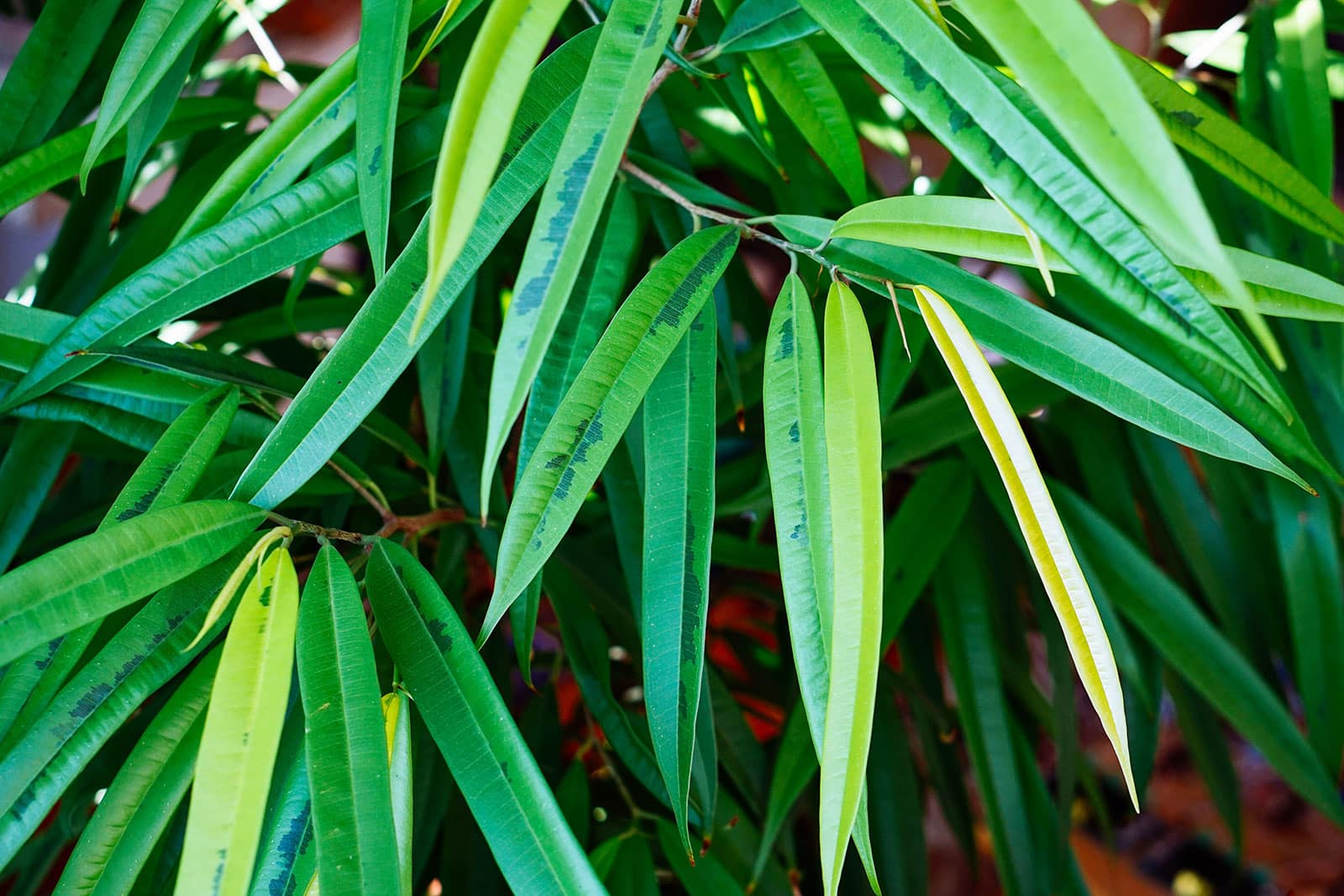
Propagating Ficus ‘Alii’
Want an extra Ficus ‘Alii’ for your own houseplant collection or to give away? If you’ve already got one, you can easily create more for free. Although this plant isn’t as easy or quick to propagate using the stem cutting method as some other types of Ficus, it doesn’t mean you can’t multiply yours.
Here’s how you propagate a Ficus ‘Alii’:
- Select a piece of stem at least 5 inches in length, preferably with a few leaves. Most specimens of ‘Alii’ have multiple tops, so you can behead one of these to acquire your cutting.
- Use a clean pair of pruning scissors to separate the stem from the mother plant. Remove any excess leaves from the bottom part.
- To propagate in water, place the piece of stem in a glass, making sure not to submerge any leaves. Set the cutting in a warm, bright location and wait.
- To propagate directly in soil, first dip the cutting in some rooting powder. Then, pop it in a planter with some suitable soil and set it in a warm and light spot.
- Be patient! Propagating houseplants can take a good bit of time, especially during the winter months.
If you’re propagating in water, the first roots should appear on your cutting within a few weeks. You can move your brand new Ficus to soil once these roots are a couple inches long.
If you opted for propagating in soil, it’s a little more difficult to see whether your propagation attempt was a success. You’ll know you’re in the clear when the cutting starts to produce its first new leaves.
Is Ficus ‘Alii’ toxic to cats and dogs?
Unfortunately, yes. The plant’s white, latex-like sap can irritate the skin and mucus membranes. It contains compounds that can cause nausea, diarrhea, and vomiting.
Your furry friend won’t die if it decides to consume part of your Ficus ‘Alii’, but the experience won’t be comfortable. Just keep this plant out of their reach!
Sources:
- https://en.wikipedia.org/wiki/Ali%CA%BBi
- Criley, R. A. (2018). Propagation of Ornamental Figs (Ficus).
- Fang, J., Chen, J., Henny, R. J., & Chao, C. C. T. (2007). Genetic relatedness of ornamental Ficus species and cultivars analyzed by amplified fragment length polymorphism markers. Journal of the American Society for Horticultural Science, 132(6), 807-815.


